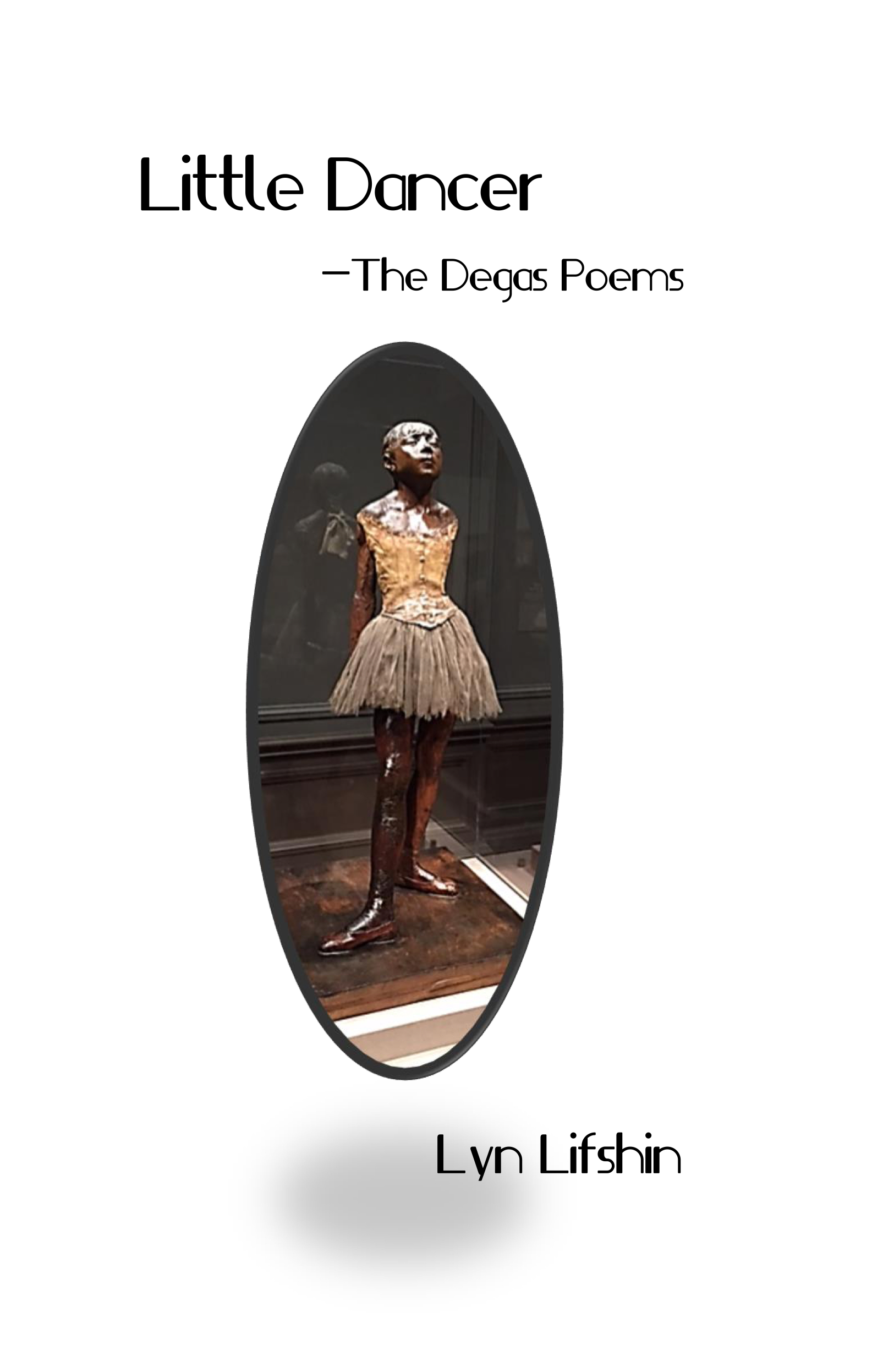Little Dancer — The Degas Poemsby Lyn LifshinPaperback, 40 pages, $14.00 (list) Available at Amazon Publisher: NightBallet Press To receive a copy by mail and to view special offers please visit |
|
Introduction:The newest poem from Lyn Lifshin, imagines and explores the world of Marie Van Goethem, the "Little Dancer" sculpted by Edgar Degas. The Degas Poems contains 29 poems. Now loved, Degas' original wax version of the little dancer was hated,though his paintings had been greeted enthusiastically. His sculpture of The Little Dancer, Aged 14, was considered shocking and unsettling, like a little monkey. It is said one father cried, 'God forbid my daughter should become a dancer.' Many were shocked by her pose and the material used: human hair, beeswax, silk. Degas loved the opera and ballet but this statue was called 'repulsive' and 'vicious,' a threat to society. It forced viewers to look at the seamy side of life since most of the young girls came from very poor slums and working class families. Others were horrified that she seemed to champion ugliness and depravity. Degas never again exhibited the sculpture. And, though he painted ballerinas all his life, The Little Dancer was largely forgotten until it was rediscovered with dozens of other sculptures. His fascination with making sculpture was little know in his lifetime, unlike his portraits, history paintings, scenes from modern life, the world of horse racig, and the theater and ballet. Christina Zawadiwsky,"We now recognize The Little Dancer sculpture by Degas as arresting and compelling, but there
was a time when she was considered scandalous and disturbing. Lyn Lifshin's poems celebrate
her creation as a symbol of so many young and impoverished French female dancers who attempted
to fill our world with grace, energy, and beauty. And Lifshin's insightful and incisive Little
Dancer poems remind us to remember her name, Marie Van Goethem, so that she will never fade into
obscurity." —Christina Zawadiwsky, author of The Hand On The Head Of Lazarus and recipient of the National Endowment Award. |
|
Poems from Little Dancer—The Degas PoemsTHE LITTLE DANCER, FLOWER OF THE GUTTER a winged urchin, |
JOLIE-LAIDE
Not pretty or ugly but a The little dancer, |
